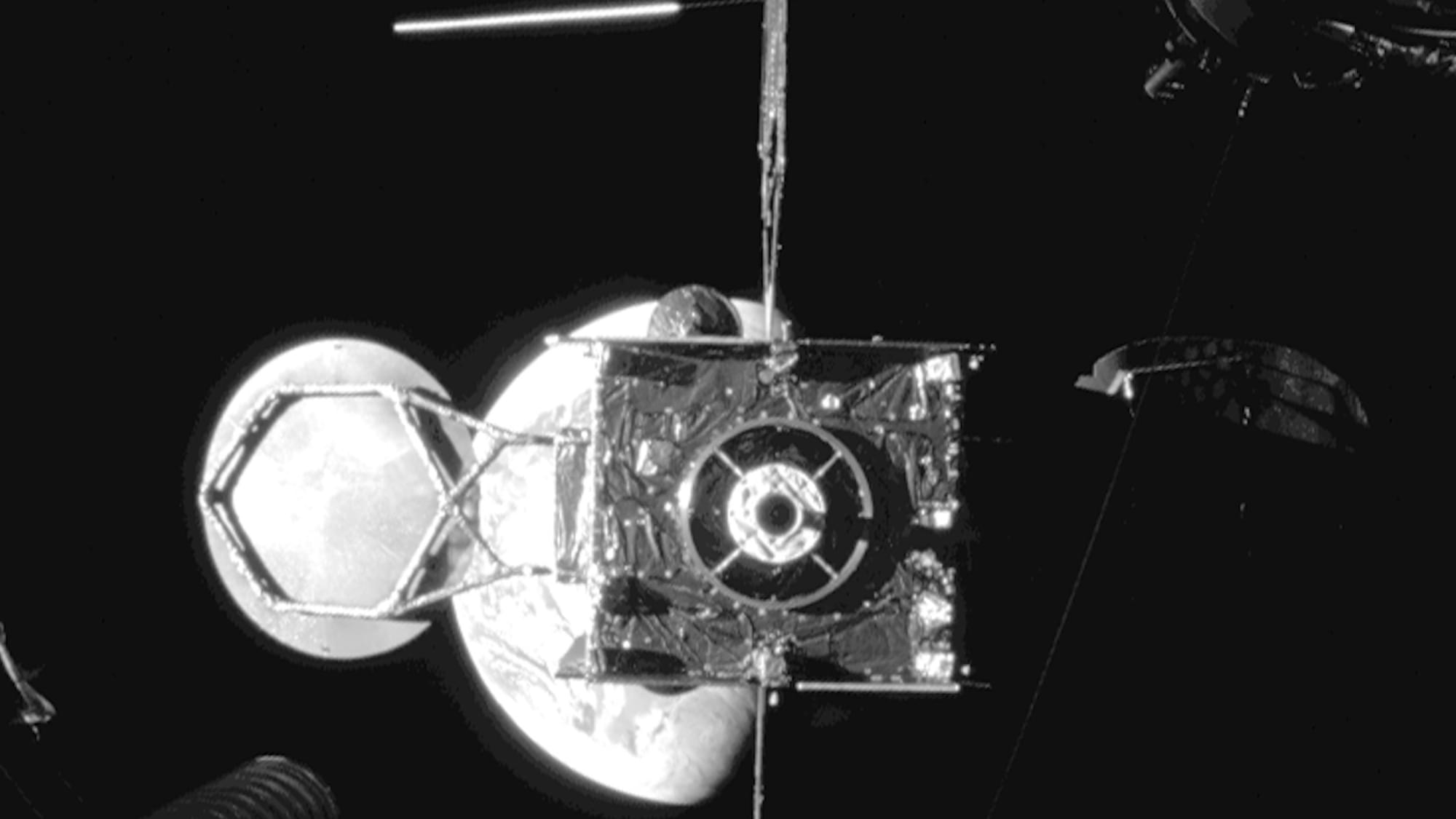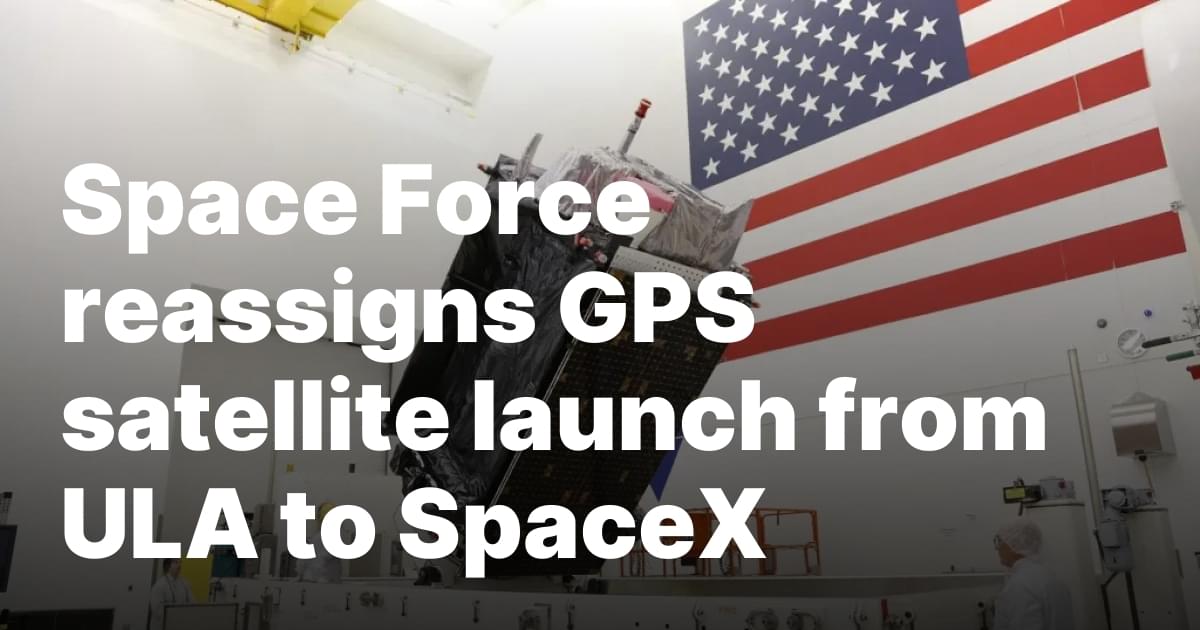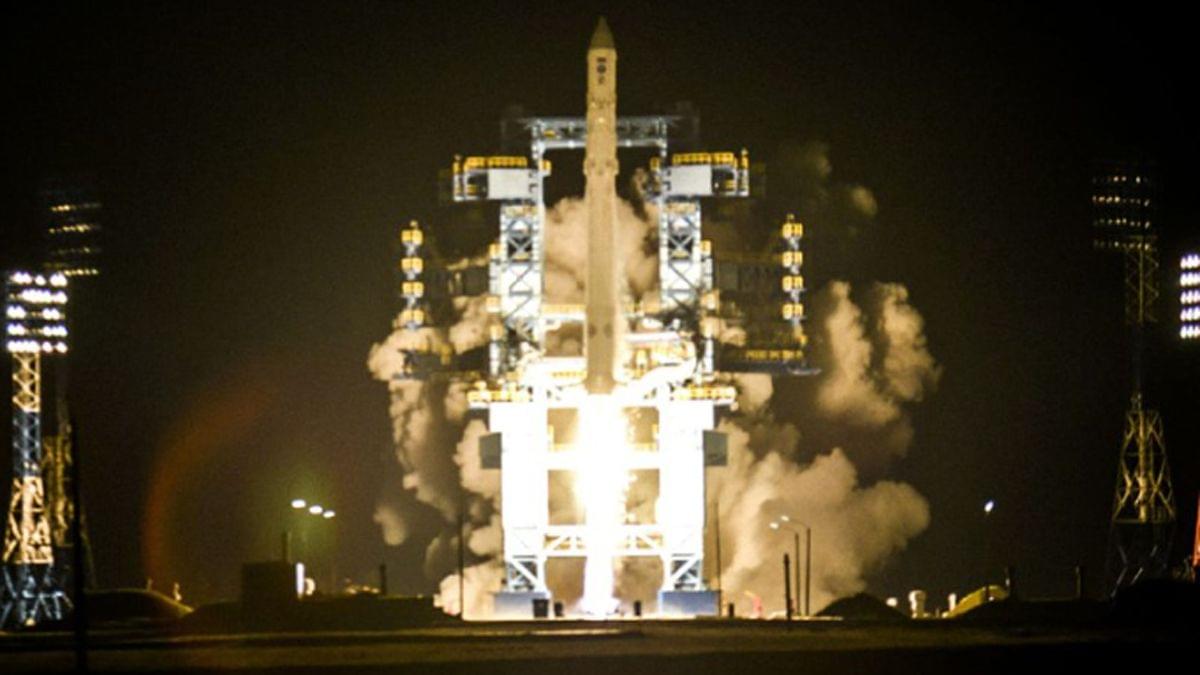Northrop Grumman’s MEV-1 completes its five-year mission with IS-901, marking a milestone in commercial satellite servicing.


*This video was recorded at Foresight’s Vision Weekend 2025 in Puerto Rico*
https://foresight.org/vw2025pr/
Our Vision Weekends are the annual festivals of Foresight Institute. Held in two countries, over two weekends, you are invited to burst your tech silos and plan for flourishing long-term futures. This playlist captures the magic of our Puerto Rico edition, held February 21–23, 2025, in the heart of Old San Juan. Come for the ideas: join the conference, unconference, mentorship hours, curated 1-1s, tech demos, biohacking sessions, prize awards, and much more. Stay for fun with new friends: join the satellite gatherings, solarpunk future salsa night, beach picnic, and surprise island adventures. This year’s main conference track is dedicated to “Paths to Progress”; meaning you will hear 20+ invited presentations from Foresight’s core community highlighting paths to progress in the following areas: Existential Hope Futures, Longevity, Rejuvenation, Cryonics, Neurotech, BCIs & WBEs, Cryptography, Security & AI, Fusion, Energy, Space, and Funding, Innovation, Progress.
══════════════════════════════════════
*About The Foresight Institute*
The Foresight Institute is a research organization and non-profit that supports the beneficial development of high-impact technologies. Since our founding in 1986 on a vision of guiding powerful technologies, we have continued to evolve into a many-armed organization that focuses on several fields of science and technology that are too ambitious for legacy institutions to support. From molecular nanotechnology, to brain-computer interfaces, space exploration, cryptocommerce, and AI, Foresight gathers leading minds to advance research and accelerate progress toward flourishing futures.
*We are entirely funded by your donations. If you enjoy what we do please consider donating through our donation page:* https://foresight.org/donate/
*Visit* https://foresight.org, *subscribe to our channel for more videos or join us here:*
*This video was recorded at Foresight’s Vision Weekend 2025 in Puerto Rico*
https://foresight.org/vw2025pr/
Our Vision Weekends are the annual festivals of Foresight Institute. Held in two countries, over two weekends, you are invited to burst your tech silos and plan for flourishing long-term futures. This playlist captures the magic of our Puerto Rico edition, held February 21–23, 2025, in the heart of Old San Juan. Come for the ideas: join the conference, unconference, mentorship hours, curated 1-1s, tech demos, biohacking sessions, prize awards, and much more. Stay for fun with new friends: join the satellite gatherings, solarpunk future salsa night, beach picnic, and surprise island adventures. This year’s main conference track is dedicated to “Paths to Progress”; meaning you will hear 20+ invited presentations from Foresight’s core community highlighting paths to progress in the following areas: Existential Hope Futures, Longevity, Rejuvenation, Cryonics, Neurotech, BCIs & WBEs, Cryptography, Security & AI, Fusion, Energy, Space, and Funding, Innovation, Progress.
══════════════════════════════════════
*About The Foresight Institute*
The Foresight Institute is a research organization and non-profit that supports the beneficial development of high-impact technologies. Since our founding in 1986 on a vision of guiding powerful technologies, we have continued to evolve into a many-armed organization that focuses on several fields of science and technology that are too ambitious for legacy institutions to support. From molecular nanotechnology, to brain-computer interfaces, space exploration, cryptocommerce, and AI, Foresight gathers leading minds to advance research and accelerate progress toward flourishing futures.
*We are entirely funded by your donations. If you enjoy what we do please consider donating through our donation page:* https://foresight.org/donate/
*Visit* https://foresight.org, *subscribe to our channel for more videos or join us here:*
*This video was recorded at Foresight’s Vision Weekend 2025 in Puerto Rico*
https://foresight.org/vw2025pr/
Our Vision Weekends are the annual festivals of Foresight Institute. Held in two countries, over two weekends, you are invited to burst your tech silos and plan for flourishing long-term futures. This playlist captures the magic of our Puerto Rico edition, held February 21–23, 2025, in the heart of Old San Juan. Come for the ideas: join the conference, unconference, mentorship hours, curated 1-1s, tech demos, biohacking sessions, prize awards, and much more. Stay for fun with new friends: join the satellite gatherings, solarpunk future salsa night, beach picnic, and surprise island adventures. This year’s main conference track is dedicated to “Paths to Progress”; meaning you will hear 20+ invited presentations from Foresight’s core community highlighting paths to progress in the following areas: Existential Hope Futures, Longevity, Rejuvenation, Cryonics, Neurotech, BCIs & WBEs, Cryptography, Security & AI, Fusion, Energy, Space, and Funding, Innovation, Progress.
══════════════════════════════════════
*About The Foresight Institute*
The Foresight Institute is a research organization and non-profit that supports the beneficial development of high-impact technologies. Since our founding in 1986 on a vision of guiding powerful technologies, we have continued to evolve into a many-armed organization that focuses on several fields of science and technology that are too ambitious for legacy institutions to support. From molecular nanotechnology, to brain-computer interfaces, space exploration, cryptocommerce, and AI, Foresight gathers leading minds to advance research and accelerate progress toward flourishing futures.
*We are entirely funded by your donations. If you enjoy what we do please consider donating through our donation page:* https://foresight.org/donate/
*Visit* https://foresight.org, *subscribe to our channel for more videos or join us here:*

COLORADO SPRINGS — The U.S. Space Force is transferring the launch of a GPS satellite from United Launch Alliance (ULA) to SpaceX in an effort to reduce a backlog of satellites waiting in storage.
The GPS III SV-08 satellite, the eighth in the GPS III constellation, is now scheduled to launch no earlier than late May aboard a SpaceX Falcon 9 rocket from Cape Canaveral Space Force Station, Florida, the Space Systems Command announced April 7.
This marks the second time in recent months that the Space Force has reassigned a GPS launch from ULA to SpaceX. Last year, the GPS III SV-07 satellite was moved from a planned ULA Vulcan rocket launch in late 2025 to a SpaceX Falcon 9, which successfully launched on December 16 in a mission called Rapid Response Trailblazer.

A research team has developed the world’s first quantum microsatellite and demonstrated real-time quantum key distribution (QKD) between the satellite and multiple compact, mobile ground stations.
The research, led by Pan Jianwei, Peng Chengzhi, and Liao Shengkai from USTC, jointly with the Jinan Institute of Quantum Technology, Shanghai Institute of Technical Physics, the Innovation Academy for Microsatellites of the Chinese Academy of Sciences, and Stellenbosch University of South Africa, is published in Nature.
Quantum secure communication is fundamental to national information security and socioeconomic development. QKD, a communication method with proven unconditional security, significantly enhances data transmission security. While fiber-based QKD networks have achieved regional implementation, their practical application over long distances remains constrained by signal loss and limited coverage. Satellite-based systems present a viable solution through free-space communication, potentially enabling QKD on a global scale.

IN A NUTSHELL 🚀 Pulsar Fusion is developing the Sunbird, a fusion-powered rocket, to significantly reduce interplanetary travel times by 2027. 🔬 The Sunbird uses a Duel Direct Fusion Drive (DDFD) engine, promising unprecedented exhaust speeds and efficiency. 🛰️ The rocket will operate as a space “tugboat,” stationed in orbital satellite docks for missions to
Don’t judge space junk’s potential for destruction using your Earthly instincts: Traveling at tens of thousands of miles per hour in space, even a small object has the potential to inflict major damage. In one incident that demonstrates that fact of physics, a 2mm piece of space once junk put a 5cm-wide dent in a climate satellite. A modest move up the scale brings much more power: “A one-centimeter piece of debris has the energy of a hand grenade,” ESA’s Tiago Soares told DW.
In an ominous 2009 incident, a Russian Cosmos satellite collided with an Iridium satellite, creating a cloud of about 2,000 pieces of junk measuring 10cm or more. That’s brings us to the nightmare scenario that should fill you with dread: The Kessler Effect. Imagine an initial major impact that creates hundreds of shards, which then start colliding with more orbiting objects, setting off a chain reaction. Actually, you don’t need your imagination. While some scientists say it wasn’t fully accurate in depicting the physics, Hollywood ventured to depict the Kessler Effect in the 2013 movie, Gravity:


WASHINGTON — Maxar Intelligence developed a visual-based navigation technology that enables aerial drones to operate without relying on GPS, the company announced March 25.
The software, called Raptor, provides a terrain-based positioning system for drones in GPS-denied environments by leveraging detailed 3D models created from Maxar’s satellite imagery. Instead of using satellite signals, a drone equipped with Raptor compares its real-time camera feed with a pre-existing 3D terrain model to determine its position and orientation.
Peter Wilczynski, chief product officer at Maxar Intelligence, explained that the Raptor software has three main components. One is installed directly on the drone, enabling real-time position determination. Another application georegisters the drone’s video feed with Maxar’s 3D terrain data. A separate laptop-based application works alongside drone controllers, allowing operators to extract precise ground coordinates from aerial video feeds.